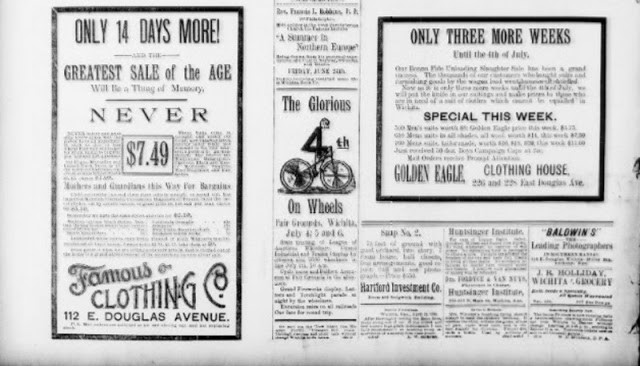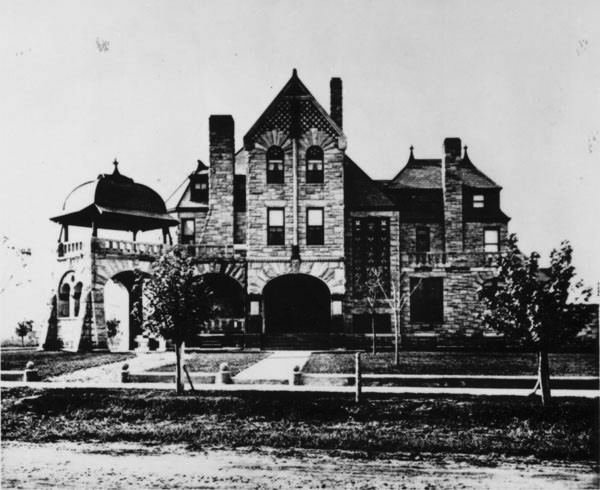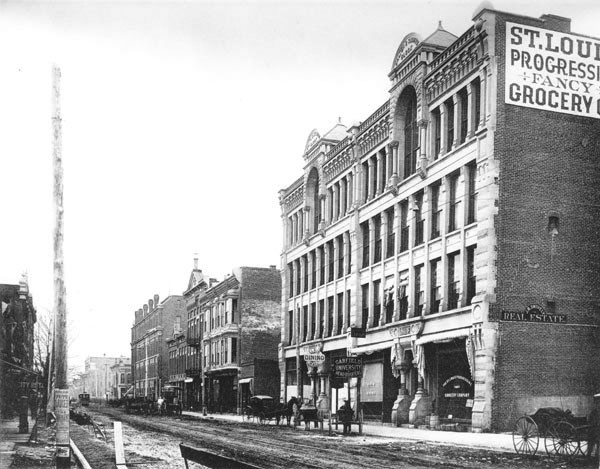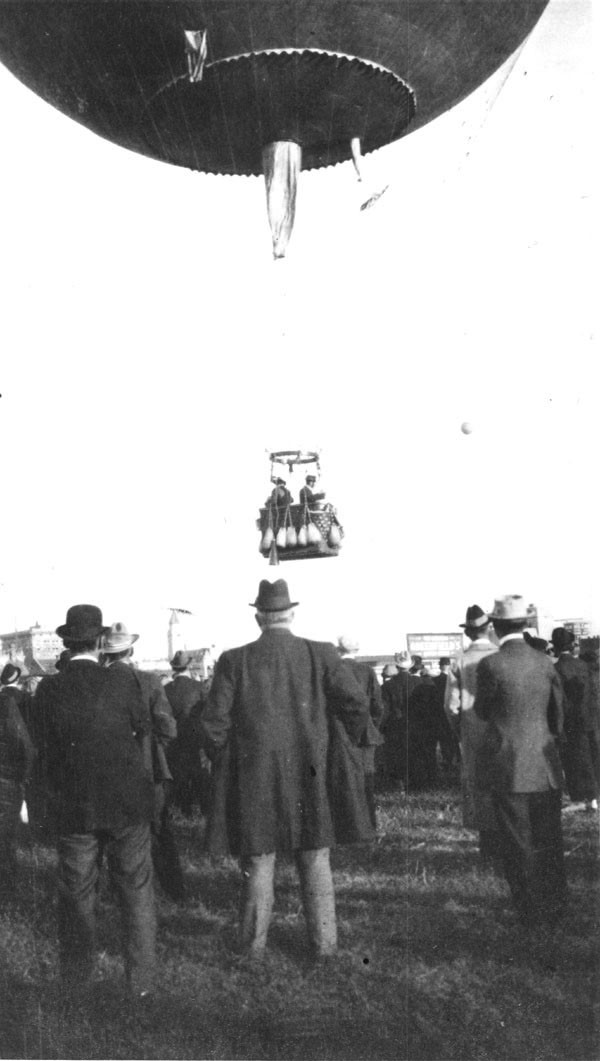The Glorious Fourth on Wheels, 1892
July 3, 2015
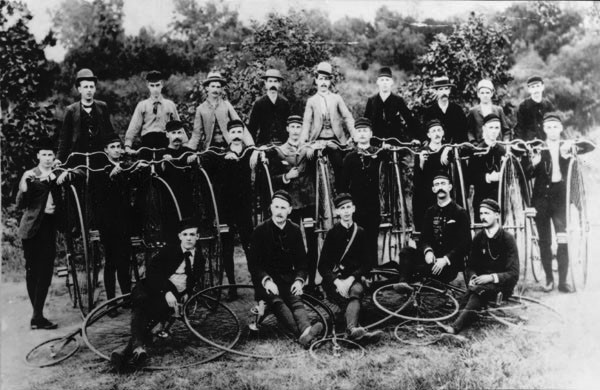
Posted by Diana Stanley, Museum Volunteer and Customer Service Representative
This weekend, Wichita will celebrate Independence Day with fireworks and family cookouts. Our patriotic spirit has been strong since the earliest days of Wichitan history. This blog will take a look at Wichita’s festivities in 1892 and the “The Glorious Fourth on Wheels.”
As advertised in the Wichita Daily Eagle, the festivities included:
|
|
But what does all this mean? Who were the Wheelmen? Where were the races? What was 25 cents in 1892?
Wheelman meant bicycles. There was a huge bike boom in the 1890s as bicycles became increasingly affordable. By 1892 a bike might cost $100 though that price continued to drop going into the 20th century. Wichita had popular Bicycle Clubs. Wichita’s population fluctuated wildly in the 1880s and 1890s but a good estimate is 24,000 citizens. Two-thousand cyclers would be 1/12th the total population of Wichita. It really was a “Fourth on Wheels.”
|
|
|
Source: WichitaPhotos.org |
According to the Tihen notes, Wichita built a “new” track for the wheelmen in 1888 on the inside of the race track in Davidson’s park. That track is likely where the advertised races happened. Davidson’s park is one the three main parcels of land which constitute modern day Riverside Park. It was named for one of Wichita’s Founding Fathers, James Davidson.
|
|
|
James Davidson's home, sometimes called Kirby Castle. |
The Wheelman’s Ball was in Garfield Hall. There are two buildings which fit the bill. First is the Main Hall of Garfield University. Friends University purchased and replaced this short-lived college campus. Its main building was built in 1886 and is now called the Davis Building, but at that time people might have still identified it with Garfield. The other location for the Ball was the Garfield Memorial Hall, named after the assassination of President Garfield and also built in 1886. Garfield Memorial Hall was located on the corner of 1st Street and Water.
|
|
|
Wichita Garfield Offices |
The “fair grounds” mentioned were established in the 1870s by the Sedgwick Country Agricultural Society. The society purchased 40 acres southeast of the city along the Chisholm Creek from a “Mr. Neely.” Chisholm Creek was straightened into a canal in the 1920s, but at that time would have been in the same area as the current East High School.
Activities at the fair were quite exciting. In the late afternoon, Wichitans watched Madam Kailetta ascend 500 to 600 feet in the air in a balloon before parachuting to the ground. According to the Tihen notes, Kailetta was a full-time performer, having made 60 “accessions” in the last year. Wichitans also enjoyed a grand firework display. The 1890s saw escalating use of fireworks in America, so much so that it led to the Society for the Suppression of Unnecessary Noise. This Society pioneered the first firework restriction laws.
|
|
|
Source: WichitaPhotos.org |
The cost for this exciting event for the average adult was 25 cents. Using the Federal Consumer Price Index, that would cost roughly $6.67 in 2015 dollars. Between wheelman races, balloons, and fireworks, Wichitans got a bargain. Reporters wrote the street cars were “crowded beyond their capacity.”
Special note goes to the Chronicling America newspaper archives and the Wichita State University Special Collections Tihen notes.
